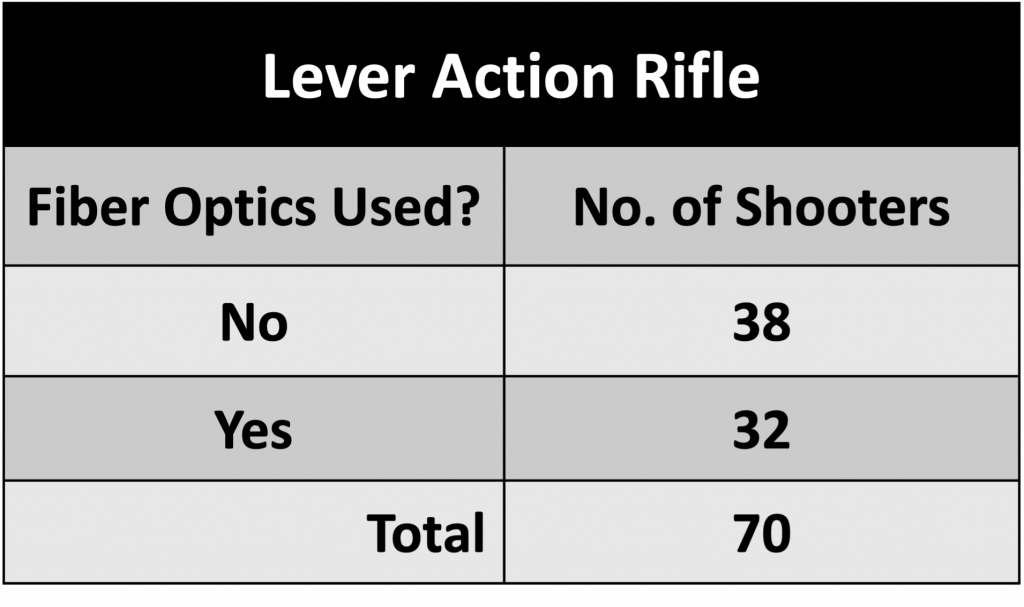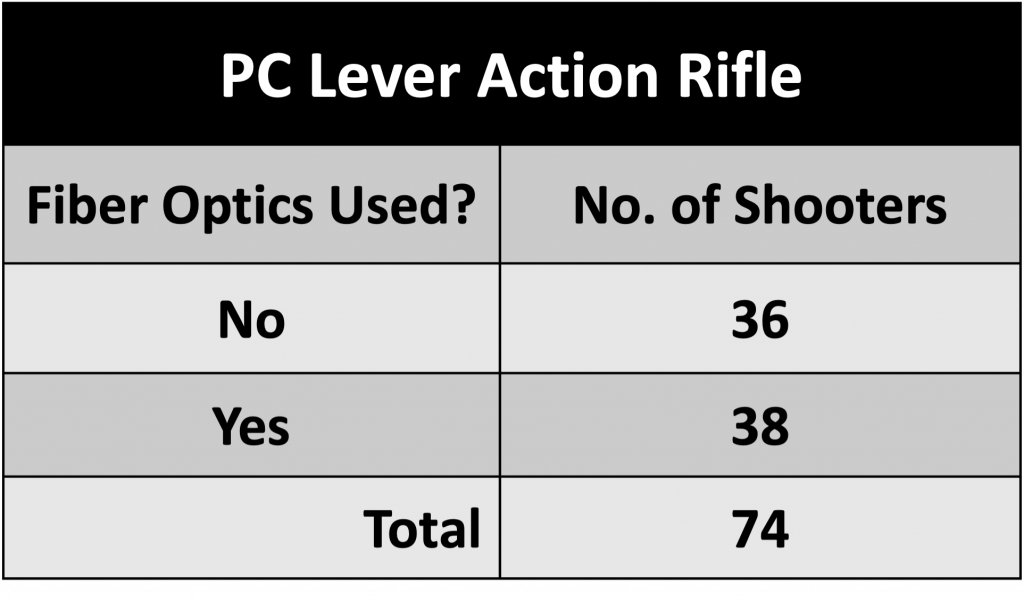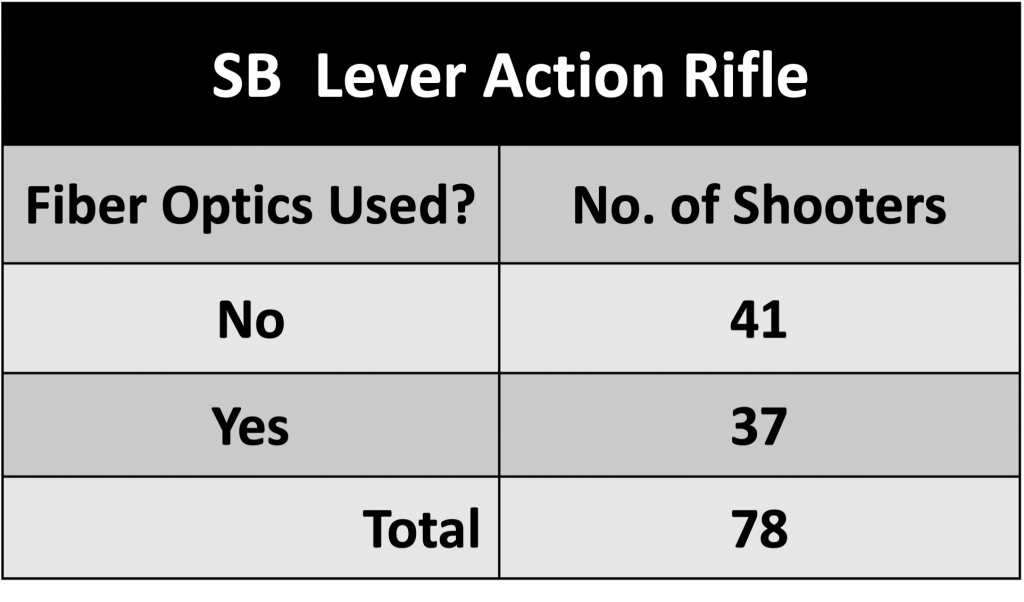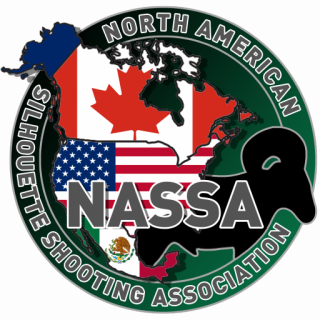
Competitors who try Lever Action Rifle Silhouette for the first time usually make the same remark – “This Lever Action Rifle Silhouette game is really fun to shoot!” Maybe it’s the nostalgic feeling of firing iconic firearms used in the Wild West. Certainly Cowboy Action Shooters feel this way. Maybe it is using iron sights and not watching that damn cross-hair/dot reticle in your scope bouncing around the animal!
Whatever the reason, Lever Action Rifle Silhouette competition has rocketed to the top as the most popular Silhouette rifle discipline. So drag dad’s old lever action rifle out of the closet and come on out to a range offering Lever Action Rifle Silhouette matches near you!
For more information on Lever Action Cartridges, click on the link below:

Evolution of Lever Action Rifles
While the concept of a lever action mechanism might have been conceived in Europe, the lever action rifle remains a true American icon. Many of the lever action rifles in use today for Silhouette are largely the same design as those used in the Wild West. Therefore, for the shooter who wishes to give Lever Action Rifle Silhouette a try, it is useful to briefly outline the history of lever action rifle development as it relates to selecting lever action rifles, sights and cartridges for Silhouette competition.
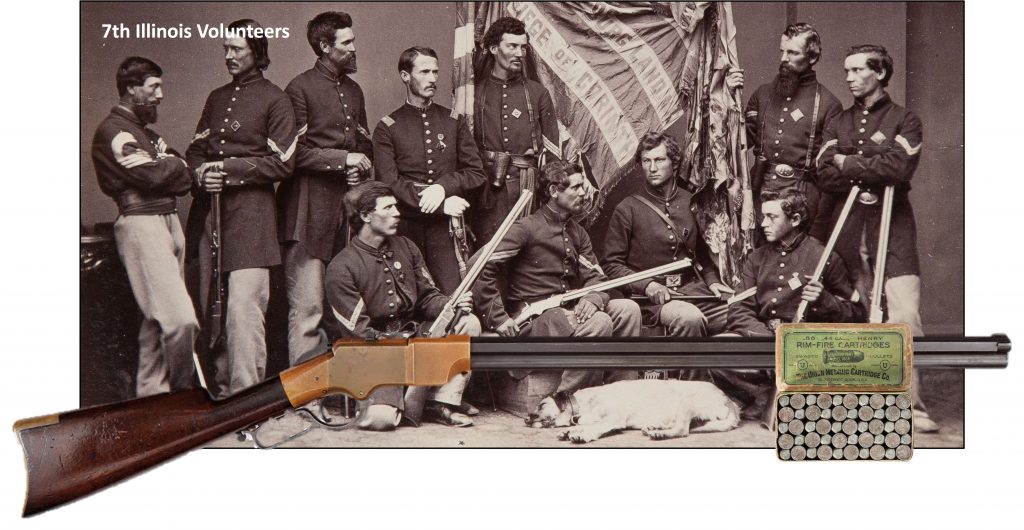
The first real commercially successful lever action rifle was the 1860 Henry Repeating Rifle chambered in the .44 Henry Rimfire Cartridge with a magazine tube holding 16 rounds. While not as popular as the Spencer Reating Rifle, the Henry even saw limited service in the Civil War, being privately purchased by Union soldiers such as the 7th Illinois Volunteers pictured above. The 1860 Henry Repeating Rifle certainly made an impression with the Confederate Army.
“Its a rifle that you could load on Sunday and shoot all week long!”
Attributed to a Confederate Officer
Oliver Winchester’s Model 1866 was the successor to the 1860 Henry Repeating Rifle, refining Benjamin Henry’s toggle-based design by adding a loading gate in the receiver for quick reloading and adding a wooden hand guard. The Model 1866 was nicknamed the “Yellowboy” due to its brass receiver.
Seven years later, Winchester unveiled the Model 1873 that used the same basic toggle-link action as the Henry, but was upgraded with a closed tubular magazine, a wooden forearm and a steel receiver. Perhaps more important is the Model 1873 was chambered in the new black powder center-fire .44-40 cartridge (later, .38-40 and .32-20). It proved to be a huge commercial success as it became known as “The Gun That won the West” and manufactured from 1873 to 1923.
Marlin was not far behind in significant improvements to lever action rifles in the final 20 years of the 19th century. The Marlin Model 1889 featured a locking lug and solid top receiver (side ejection) that made this gun a much stronger action than its Winchester predecessor. This was an extremely important develop as black powder was being phased out and replaced by smokeless powder.
Last but not least was the arrival of John Browning’s magnificent Winchester Model 1894 design to further leverage the safer use of smokeless powder and larger rifle cartridges. His design featured a breech block that secured the entire breech bolt when closed. This allowed the safe use of the iconic 30-30 lever gun cartridge as still in use today for hunting and on the Lever Action Silhouette firing line!

Lever Action Rifle Silhouette Regulations
The following summarizes the three types of Lever Action Rifles used in Silhouette competition:
Cowboy Lever Action Rifle Class:
The Cowboy Lever Action Rifle is defined as any lever action center fire rifle .25 caliber or larger with a tubular magazine of original manufacturer or replica thereof. A rimmed case loaded with a round or flat nosed bullet must be used. Exception: .30 Remington and .35 Remington are allowed.

Pistol Cartridge Lever Action Rifle Class:
The Pistol Cartridge Cowboy Lever Action Rifle is defined as any lever action rifle with a tubular magazine. A rimmed pistol cartridge loaded with a round or flat nosed bullet must be used, i.e. 25-20, 32-20, 38’s, 357 Magnum, 38-40, 44’s, 44-40, 45 Colt, 45 Long Colt, .22 Magnum and .22 long rifle.
(IMAGE PENDING)
Smallbore Lever Action Rifle Class:
The Smallbore Cowboy Rifle is defined as any lever action, pump, or semi-auto rimfire rifle with a tubular magazine. Only .22 long rifle ammunition is allowed. Hyper velocity ammunition is prohibited.
(IMAGE PENDING)
Further Lever Action Rifle Restrictions:
- Barrels must be original or may be relined. Original Barrels re-bored to a larger caliber are allowed.
- Any safe trigger is allowed.
- Stocks must be of original configuration. Recoil pads, replacement buttplates, and removable cheek pieces are allowed.
If you have any further questions, please click on the link below to the Official NRA Rifle Silhouette Rulebook (Revised January 2020)

Lever Action Rifles Used in Silhouette Competition:
We are not making any specific recommendations on what rifles or what calibers to use for Lever Action Rifle Silhouette competition. What we can do is to present useful information and what competitors are using, such as equipment surveys, so that new and less experienced shooters can be more informed.
We recommend you ask your local Master shooters for recommendations if you are interested in buying new rifles and equipment or simply upgrading what you already have. Your other option is to visit our Blogs categories of “Rifles & Sights” and “Ammo & Ballistics” or ask for some advice on our NASSA Forum.
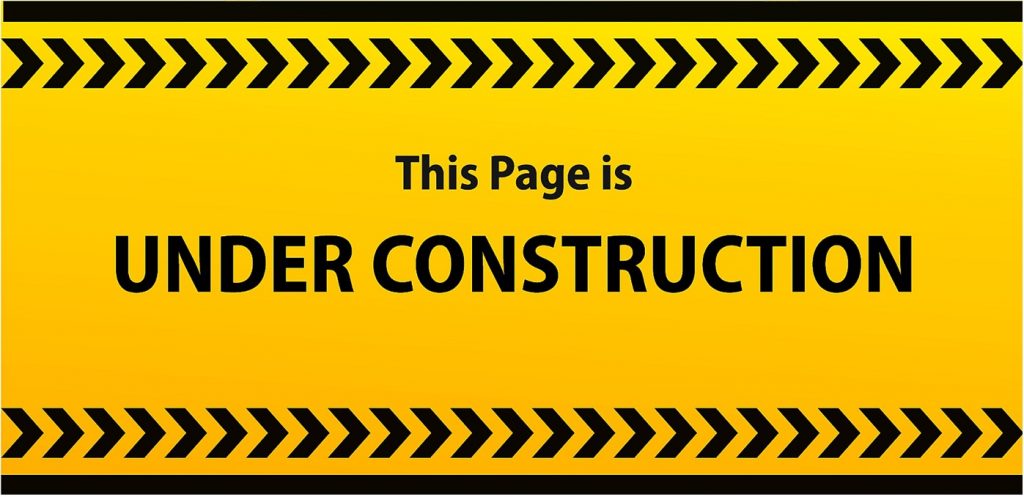
2021 NRA Lever Action Silhouette National Championship Survey – Rifle Manufacturers
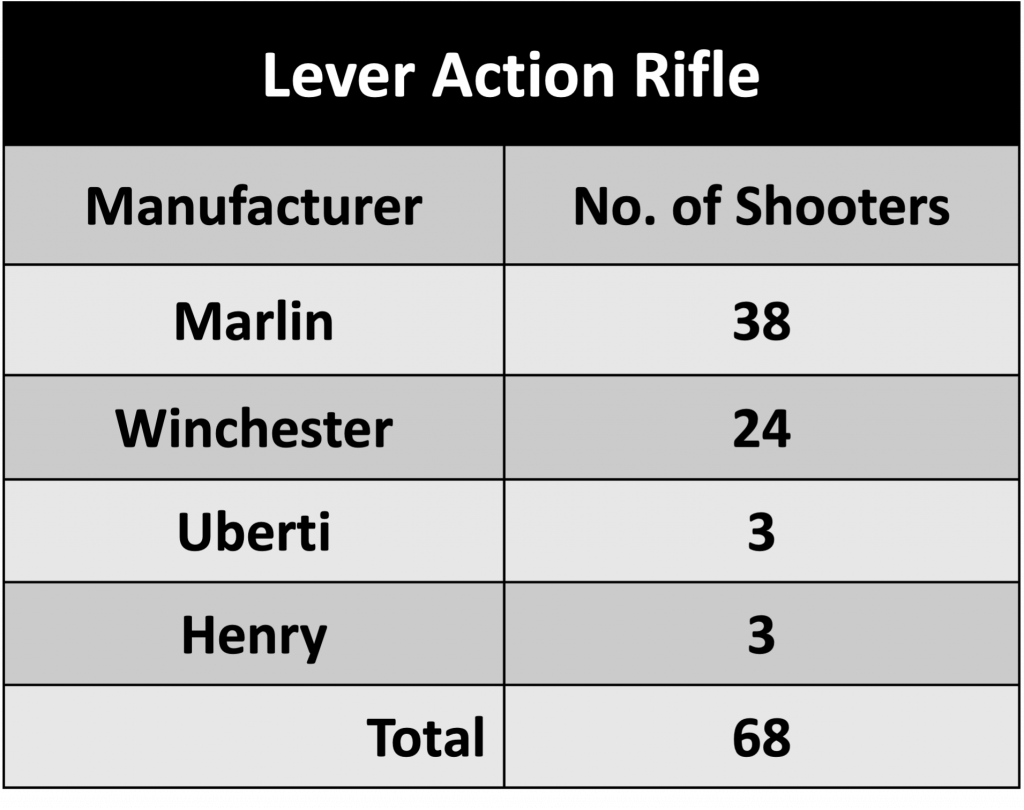
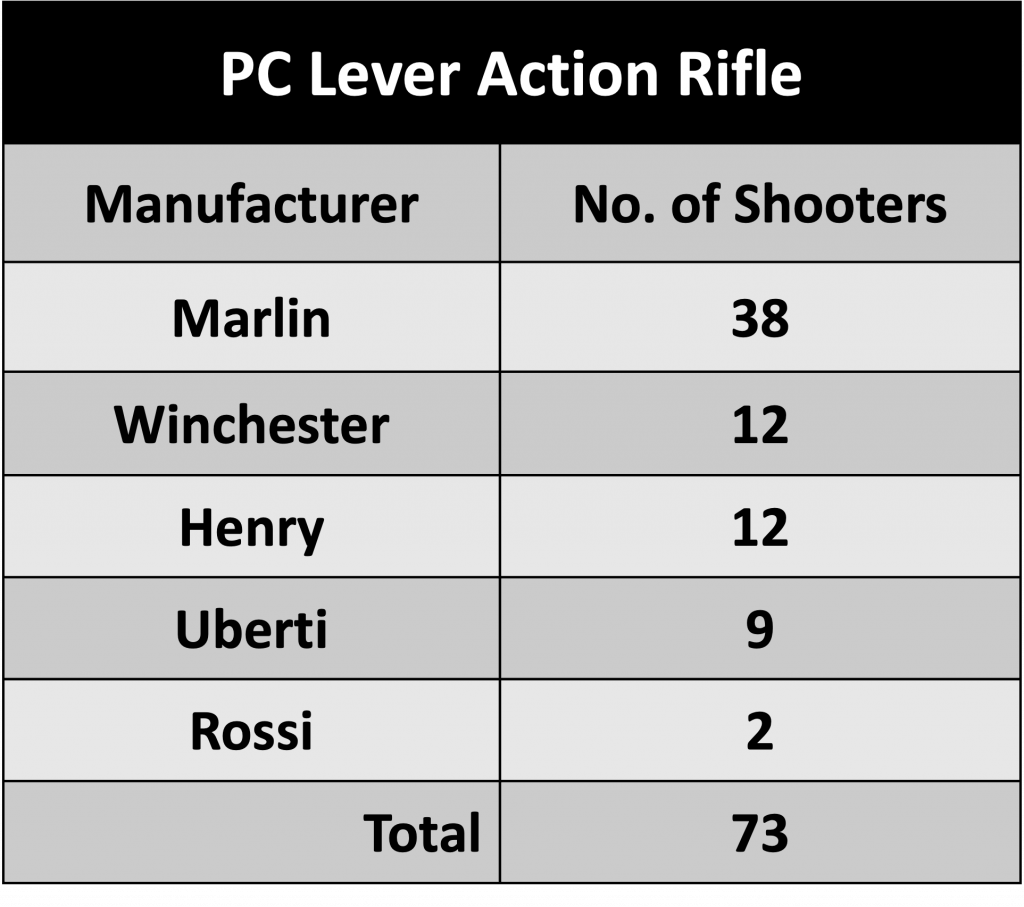
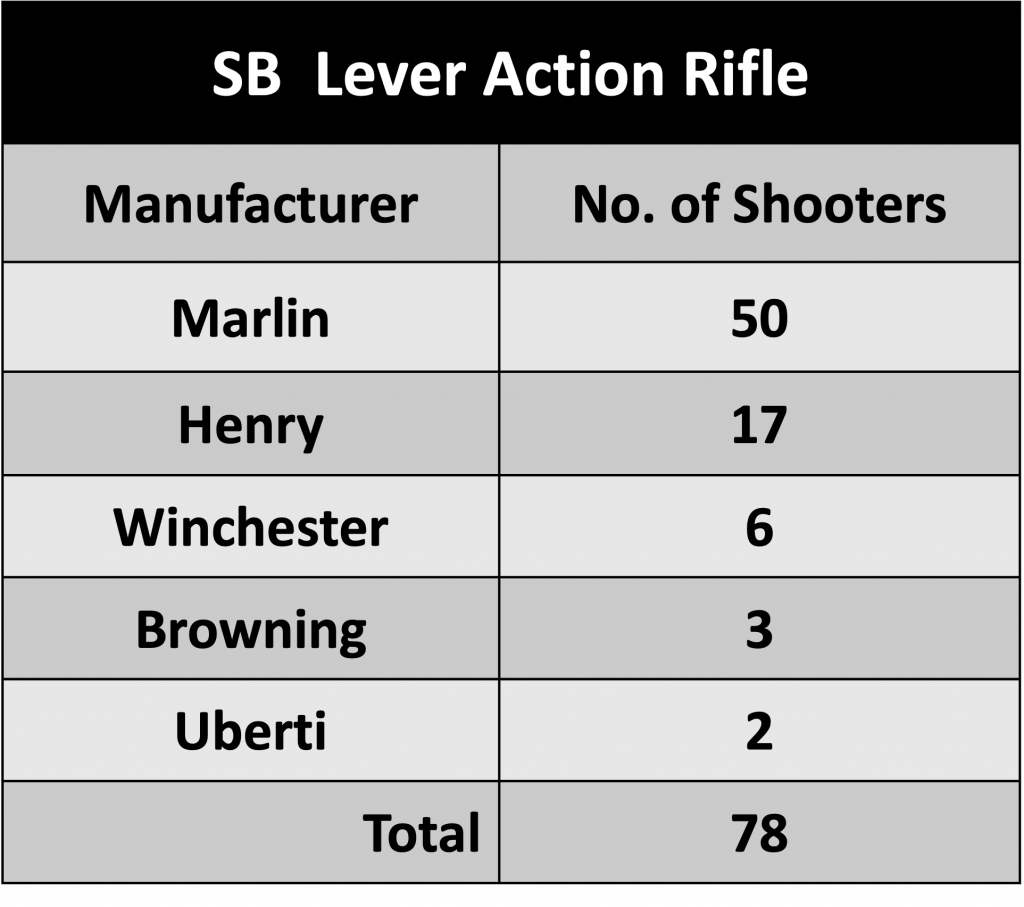

Lever Action Sights Used in Silhouette Competition:
Lever Action Rear Sights:
The NRA Silhouette Rifle Rulebook states that the rear sights may be open, receiver or tang sights, mounted as originally intended. No extended mounts are permitted.
The Marlin 336CB shown in the image below features the factory open rear sight sometimes referred to as a “leaf sight”. The notch in this rear sight can be slid forwards to raise the shot impact. This type of lever action rifle sight is the least accurate of all the options available.
The Uberti Model 1873 shown in the image below features an “old school” tang sight for lever action rifles intended to be shot at longer distances. The longer sight radius is an advantage but note there is no windage knob and eye relief can be a problem for some shooters who “crawl forward on the stock comb” to shoot.
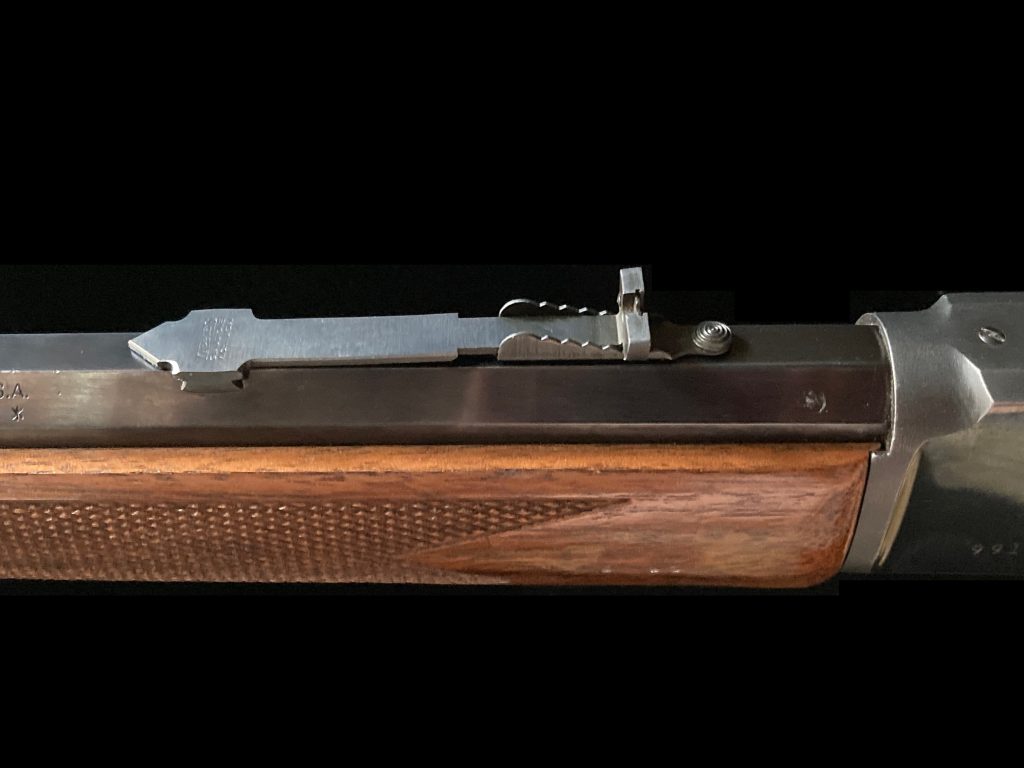
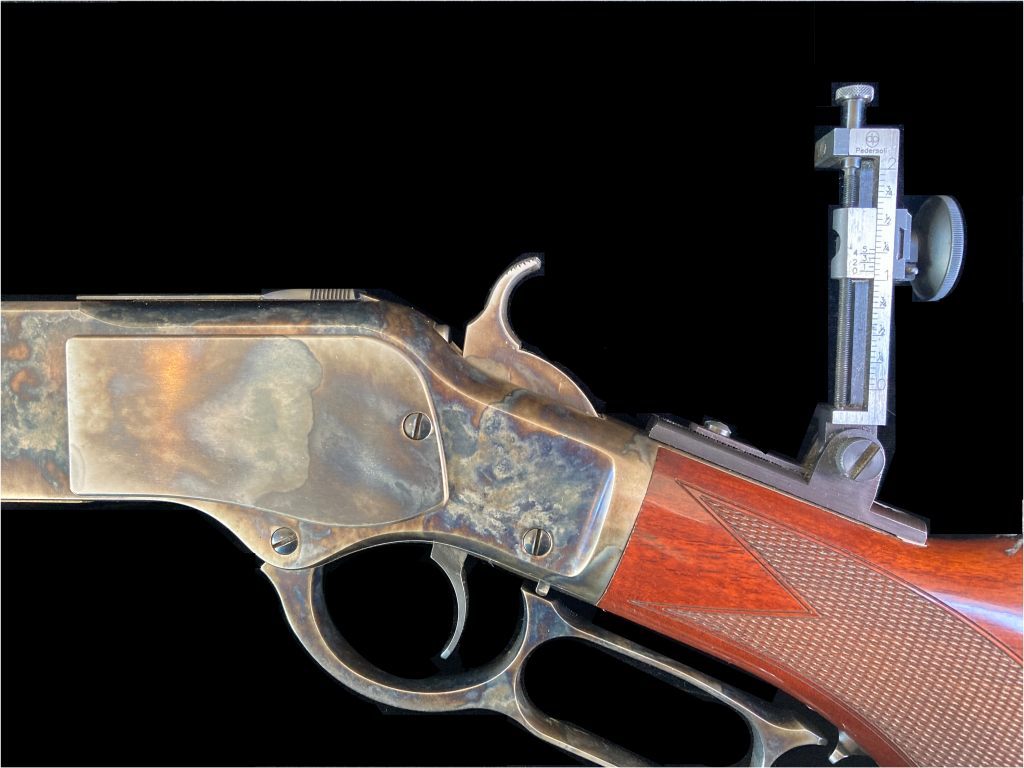
The best precision option is a receiver mounted peep sight system. The Marlin 336XLR rifle below features an aluminum Williams rear peep sight that is readily available and popular among shooters. Positive clicks on the rear sight allow one to accurately count the clicks to make an elevation or windage change.
Another popular option are vintage Redfield 75 (or equivalent) peep sights shown in the image below. Many older shooters grew up using these same sights on their club’s DCM target rifles. They are very adequate for the lever action discipline but must be adapted/modified to mount to the side of the receivers.
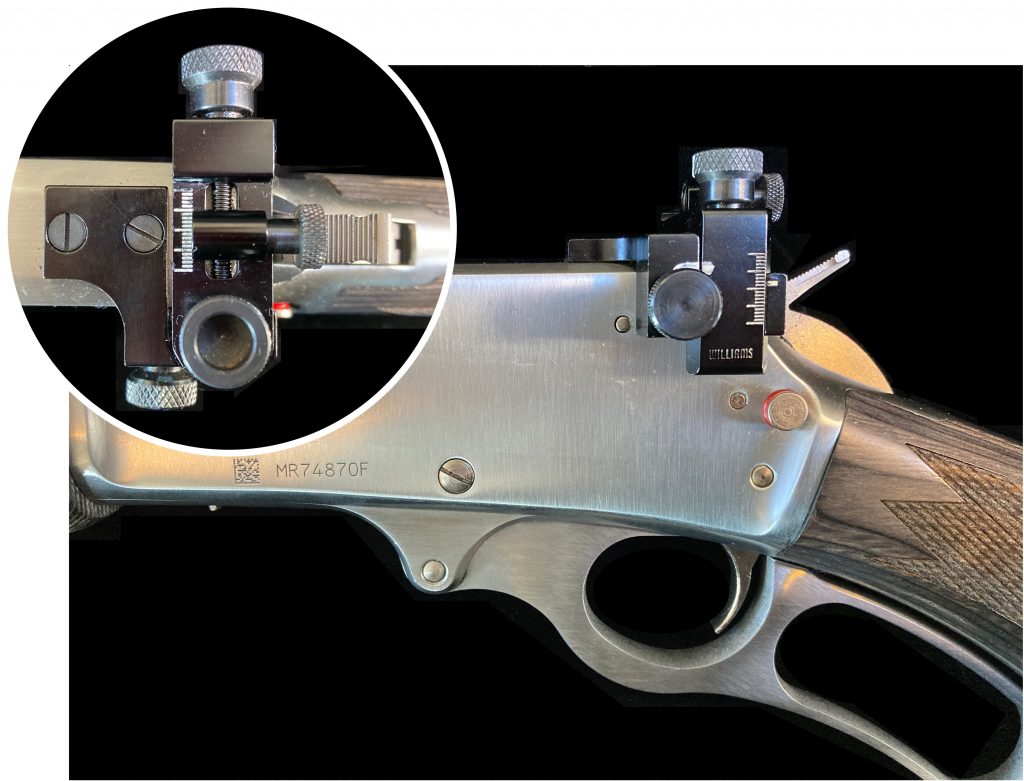
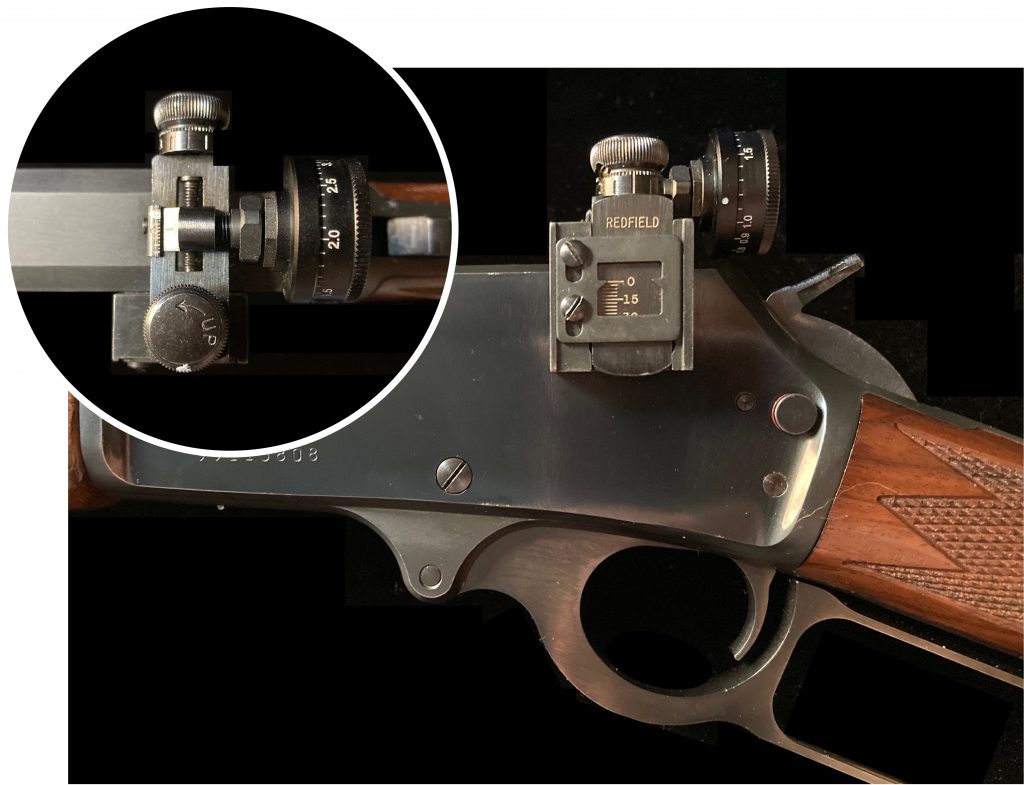
Survey results shown below from the 2021 NRA Lever Action Silhouette National Championships gives the reader a good idea of what rear sights are being used in Championship Matches. Receiver sights dominate at over 70% usage in all three lever action disciplines due to their reliability and ease of use.
2021 NRA Lever Action Silhouette National Championship Survey – Rear Sight Types
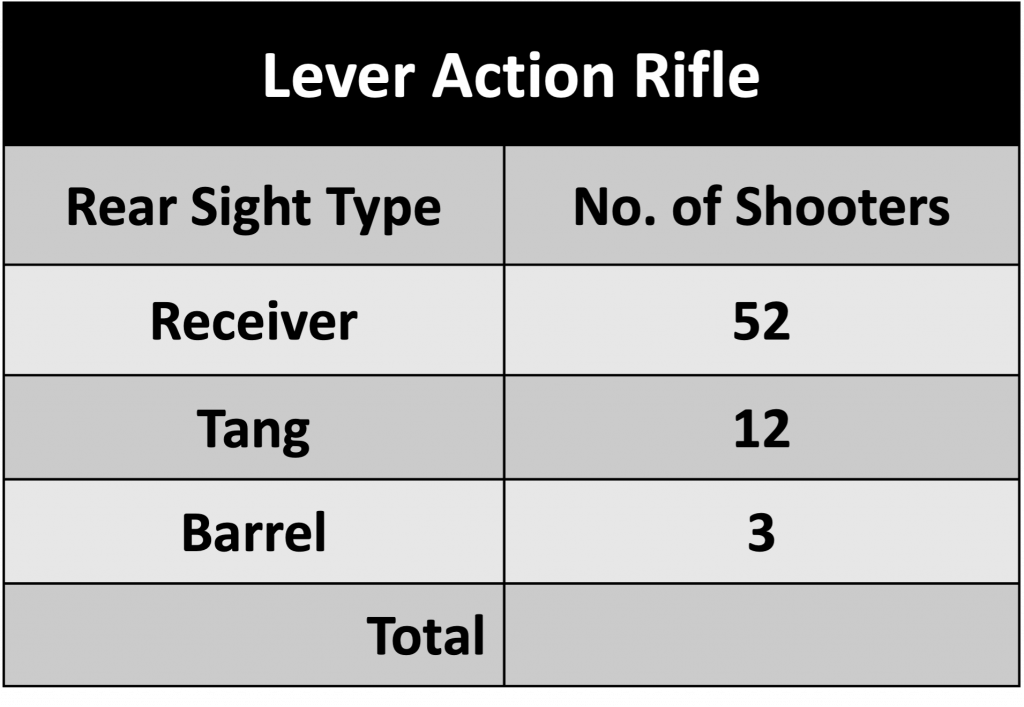
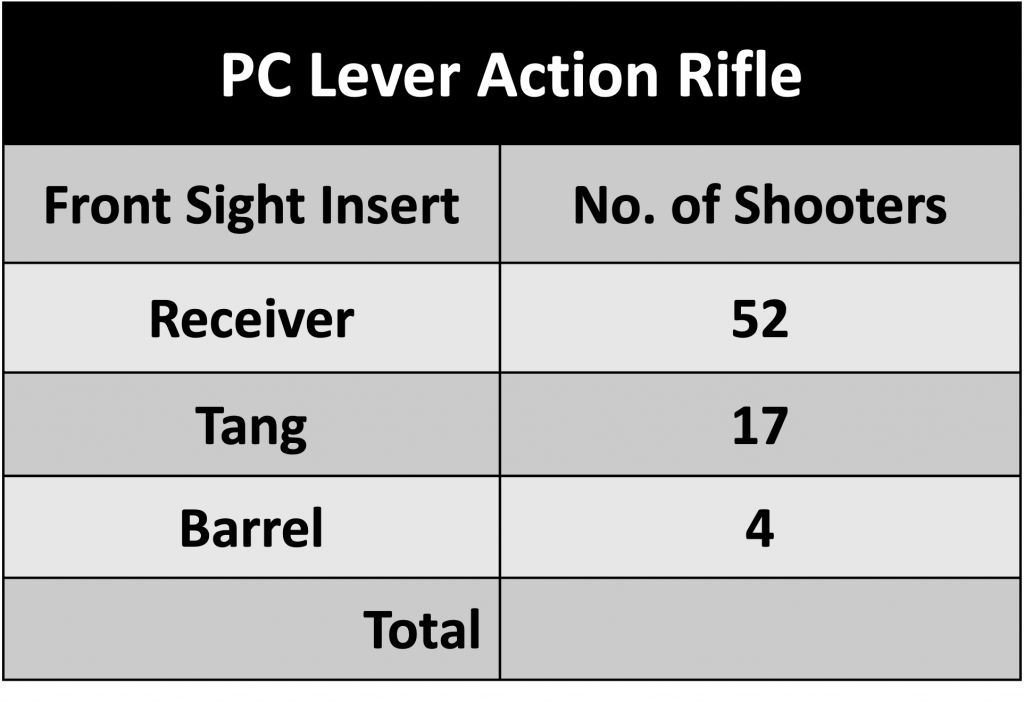
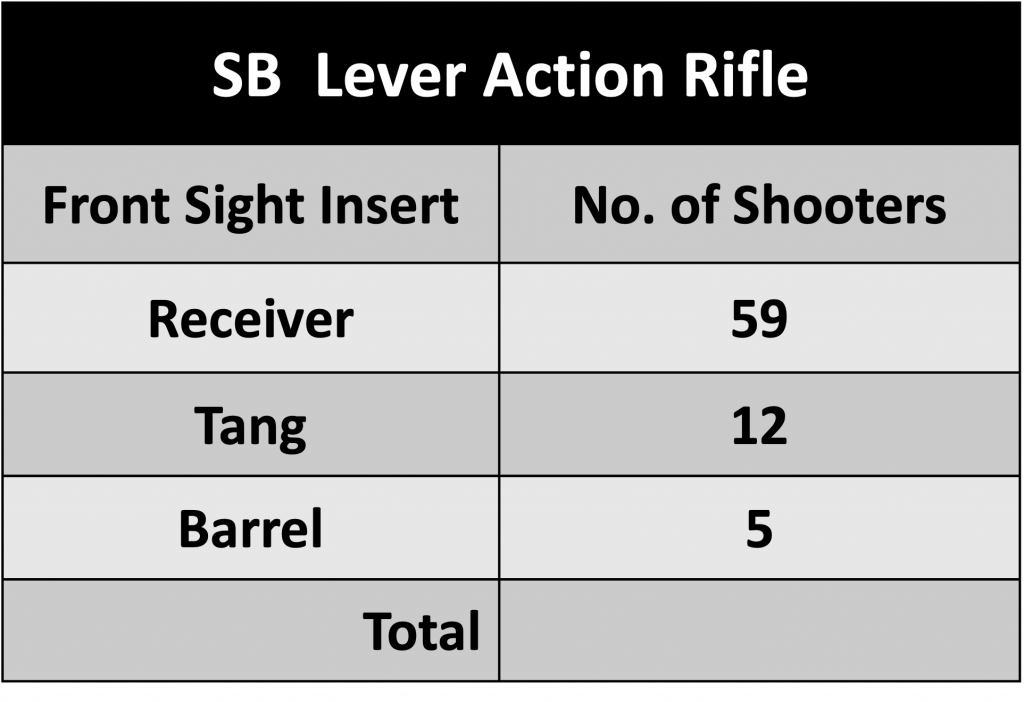
Lever Action Front Sights:
The NRA Silhouette Rifle Rulebook states that the front sights must be a post or bead or if changeable inserts, may use a post, bead or aperature insert. A front sight anti-glare tube may be used, which may be no longer than 1 1/8″ to include any attachments and no larger than a 3/4′ outside diameter.
Fiber optic material may be used in or on the post or bead and may not be longer that its support blade and not to exceed 1 1/8″ in length. In an anti-glare tube, the fiber optic material may not be any longer than the tube or extend outside the tube. The fiber optic sights do not need to be commercially manufactured.
Pictured below is a Marlin 336CB with an open bead factory front sight. The relatively large diameter of the bead would probably obscure most or all of the target. Some shooters use an aftermarket bead sight or make their own to suit their needs. Hooded front sights ,such as the Lyman 17A Front Sight shown below, are quite popular. Replaceable inserts with bead or posts of different configurations make is easy to tailor the sight picture to what works best for the shooter.
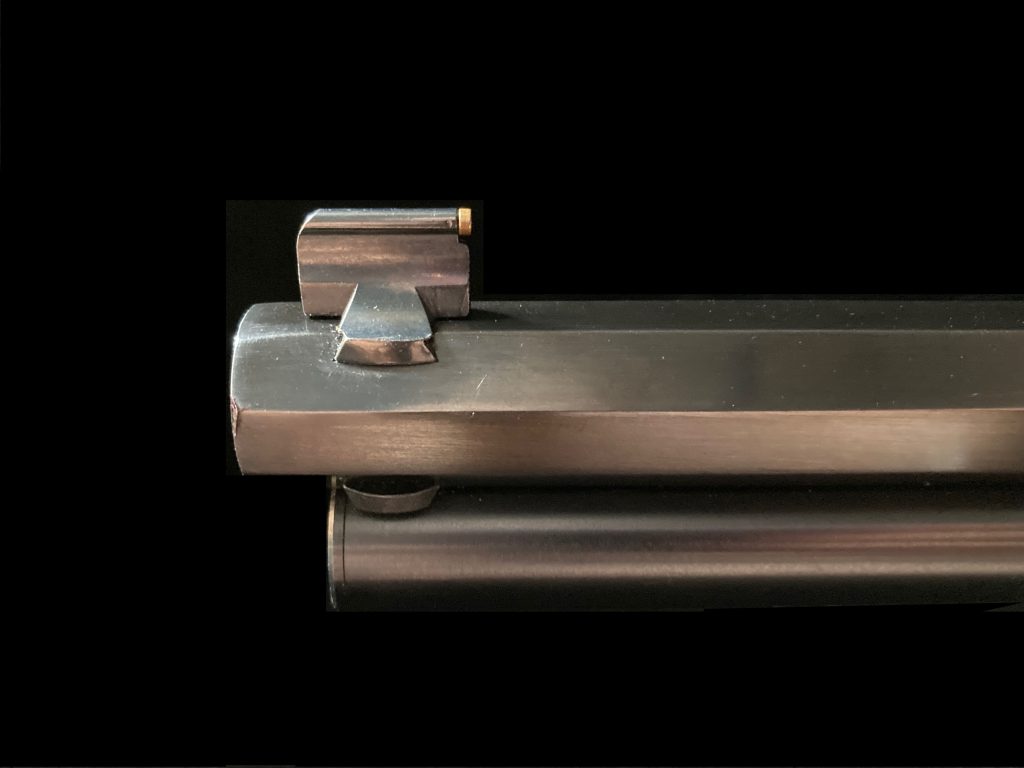
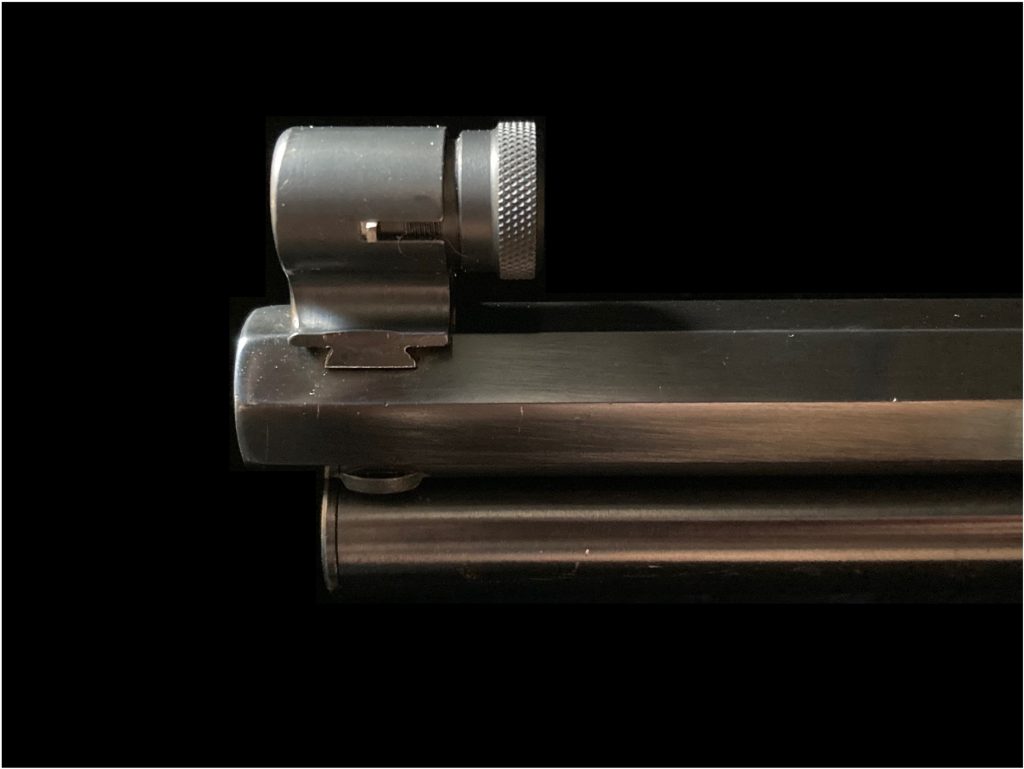
Once again, survey results shown below from the 2021 NRA Lever Action Silhouette National Championships gives the reader a good idea of what front sights are also being used in Championship Matches. Hooded front sights such as the Lyman 17A sights are dominate at over 74% usage in all three lever action disciplines due to the flexibility of replacing and optimizing the inserts.
2021 NRA Lever Action Silhouette National Championship Survey – Front Sight Types
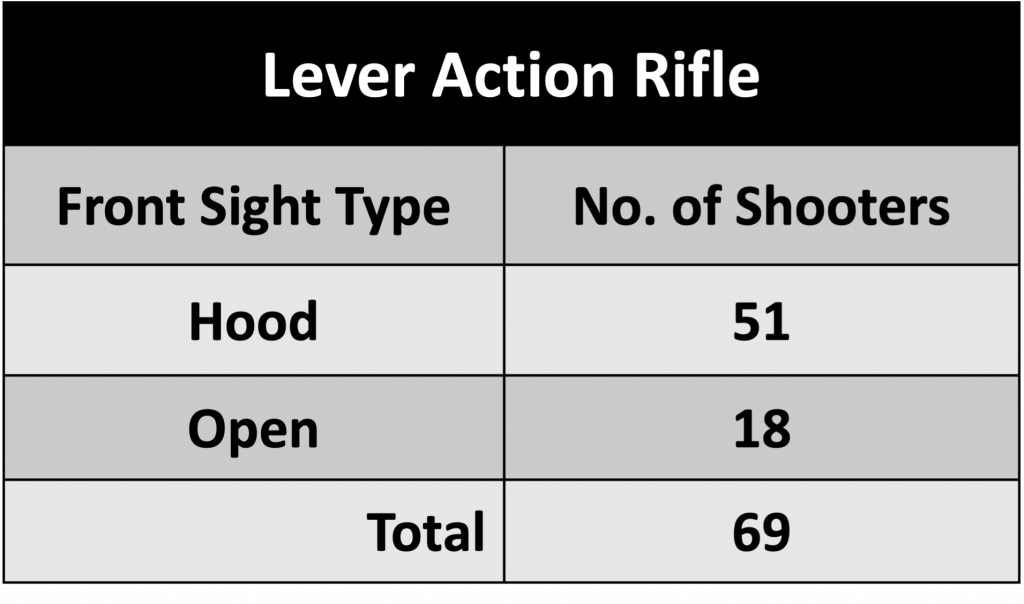
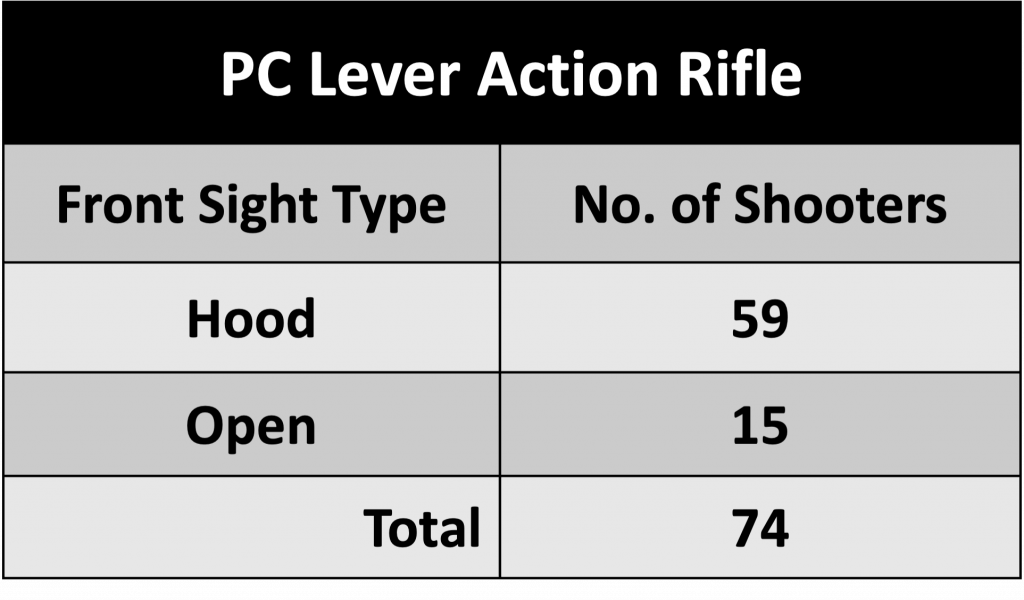
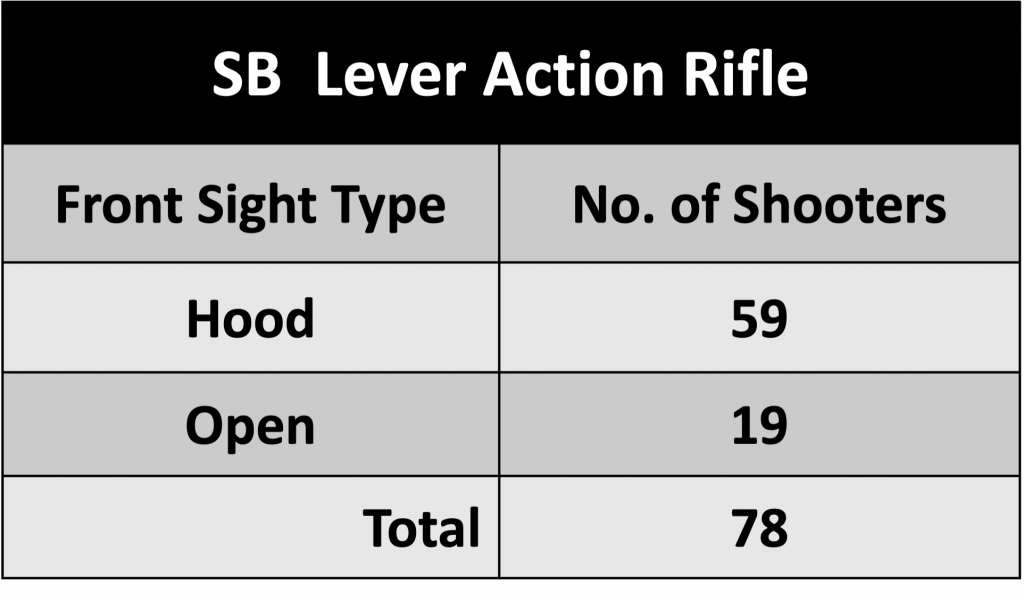
Of those shooters in the 2021 Lever Action Silhouette Nationals, the use of a bead sight that can be centered in the body of the animal are slightly favored over a post insert. Round aperature sights make up a much smaller percentage.
2021 NRA Lever Action Silhouette National Championship Survey – Front Sight Inserts
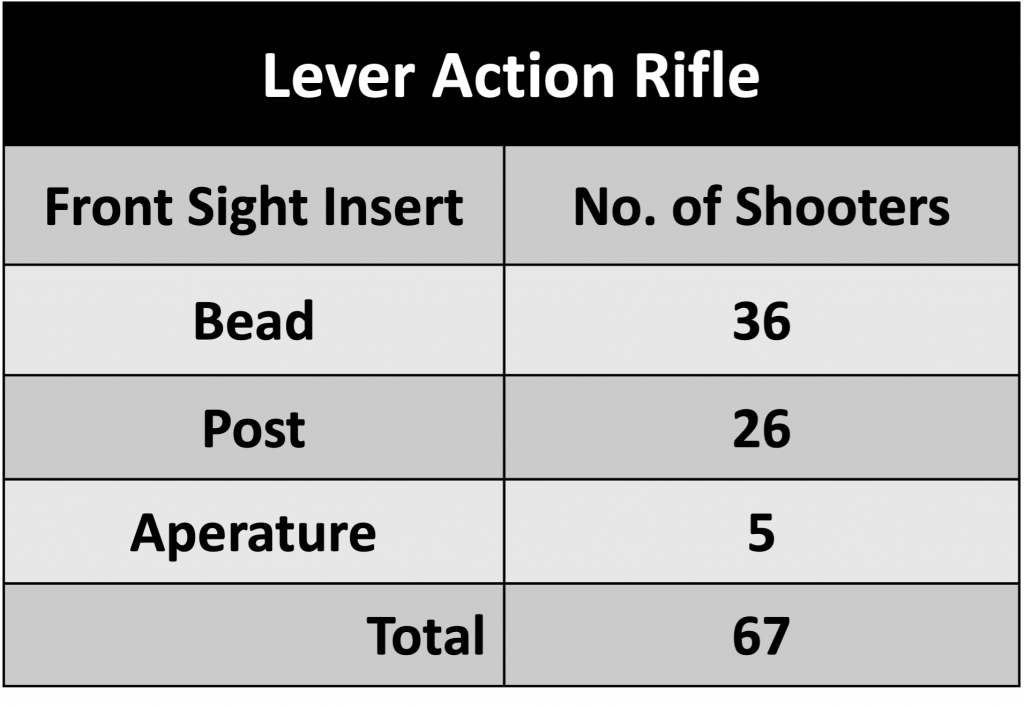
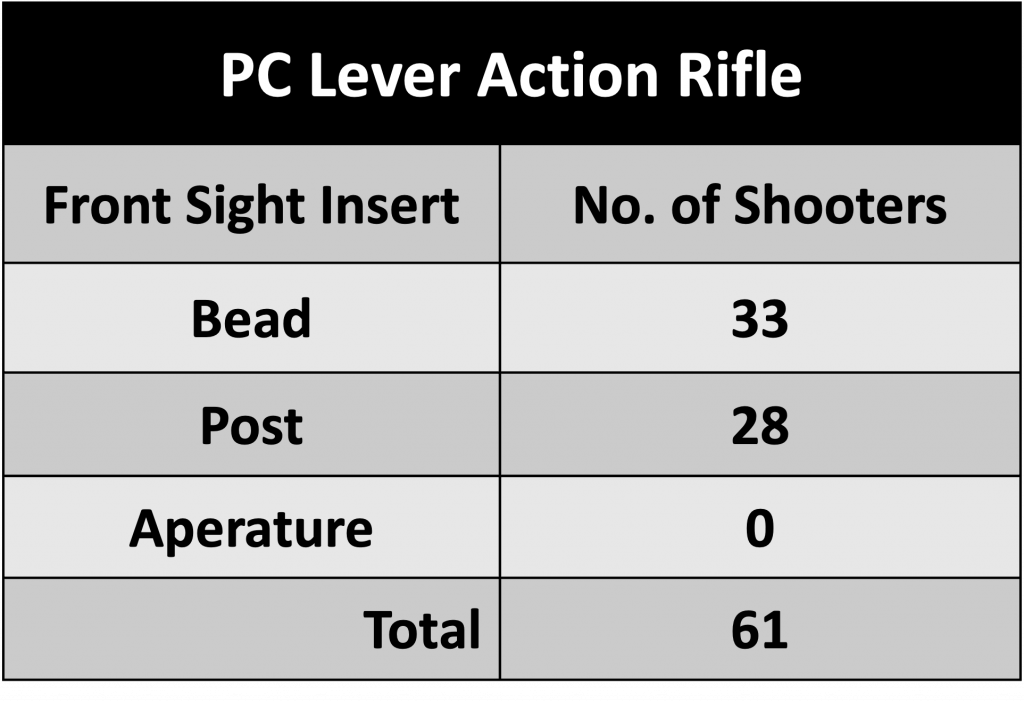
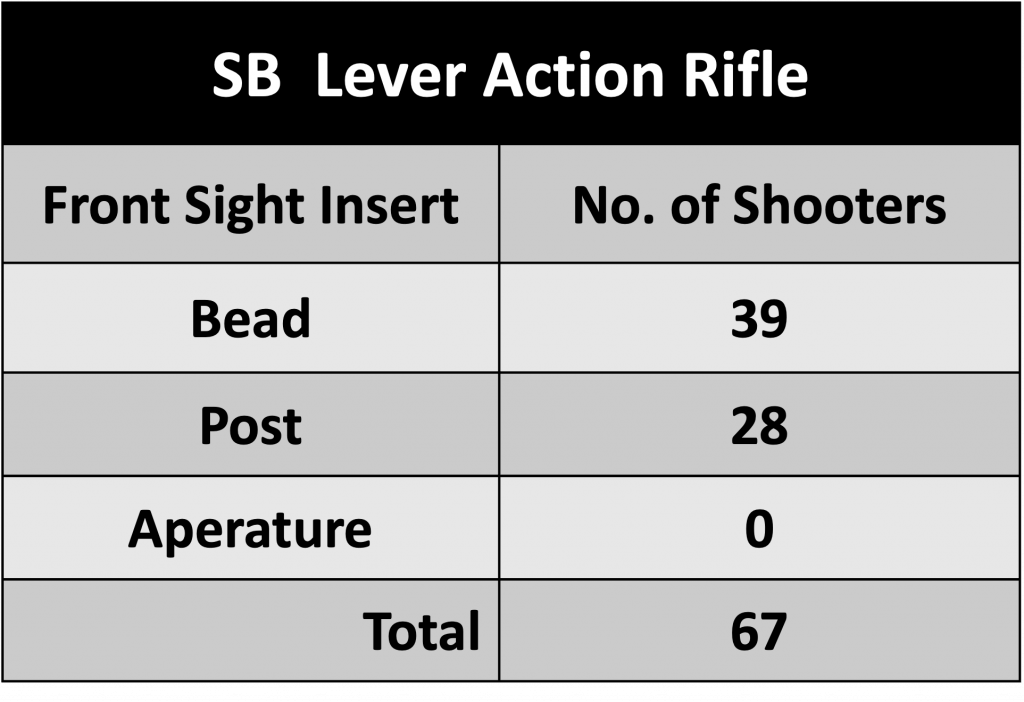
One big reason bead inserts are favored is that they can be modified to hold a very thin fiber optic element (varies from .020″-040″ diameter). The image below give an idea how the bead insert is configured to hold the fiber optic element. All the inserts we have seen are custom made by shooters for their own use and often for sale to other shooters such as the one shown here.
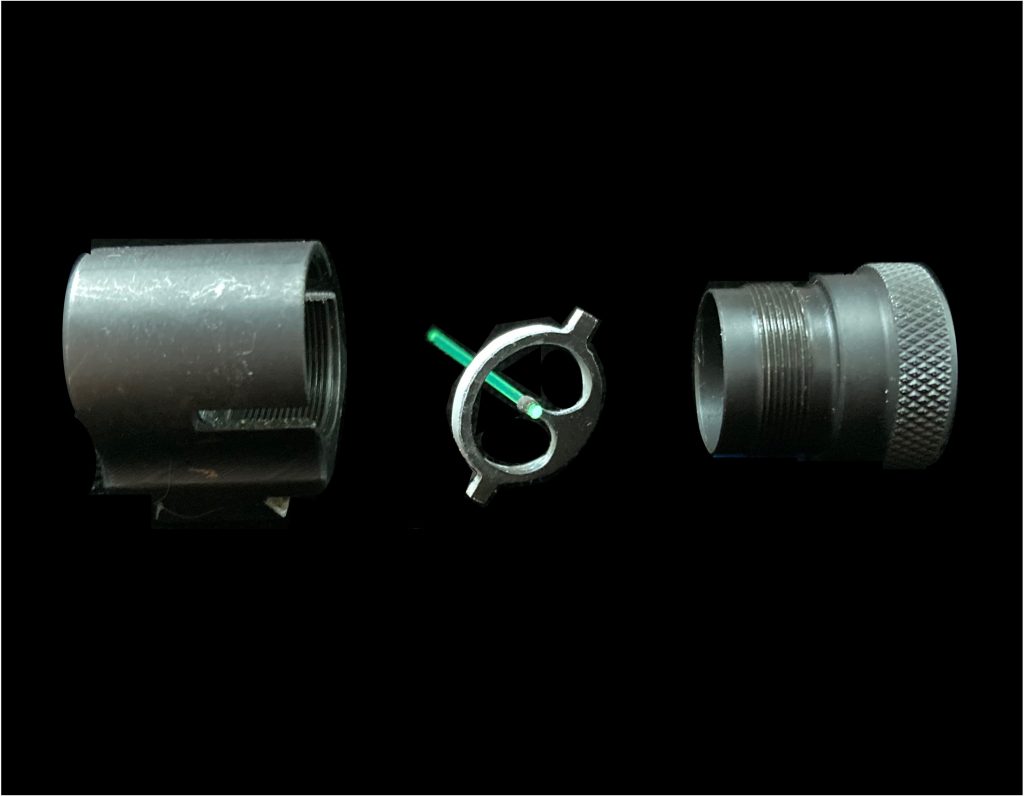
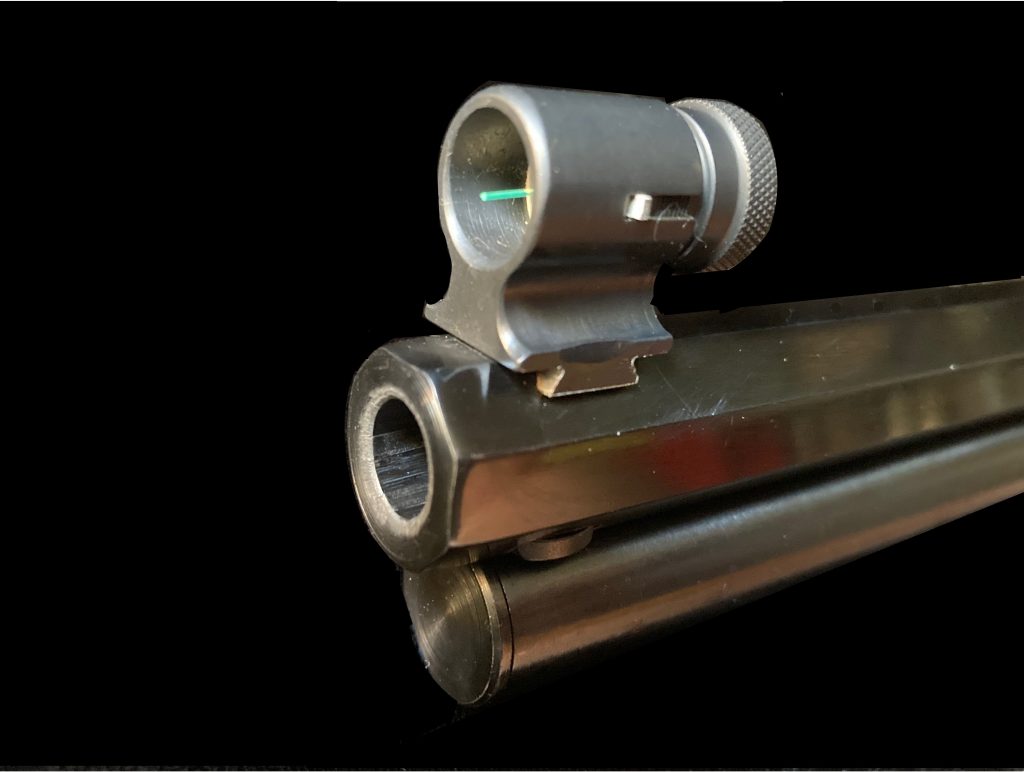
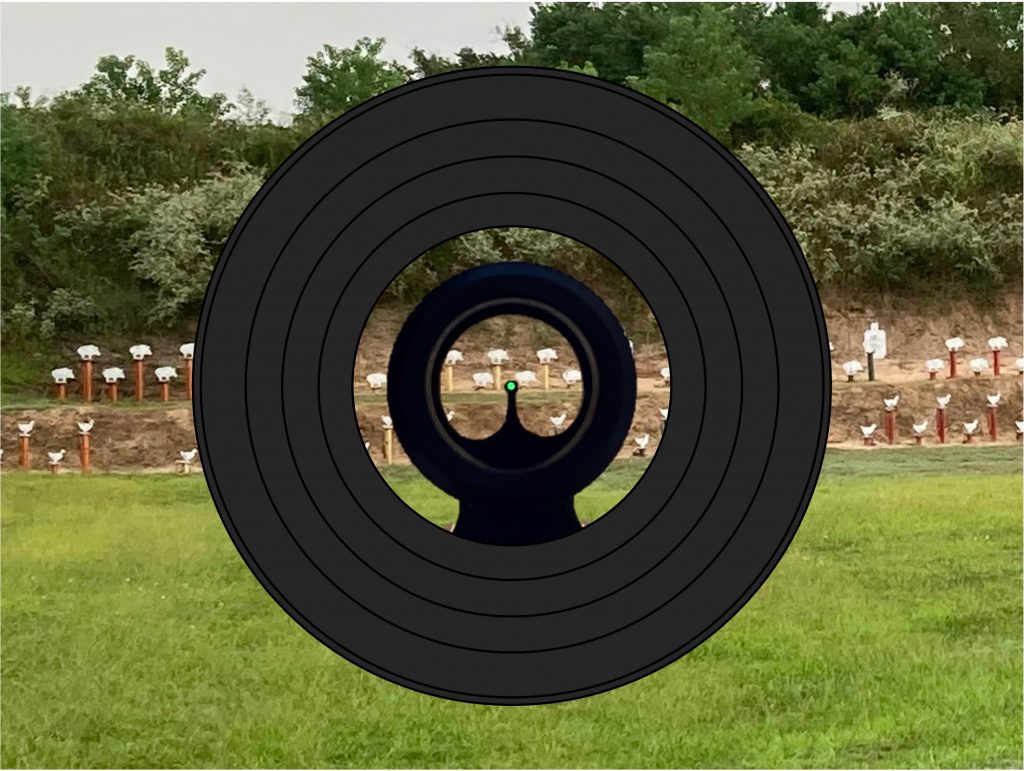
The NRA rules (Jan 2023 revision) states “fiber optic material may be used in or on the post or bead and may not be longer than its support blade and not to exceed 1 1/8″ in length. In an antiglare tube, the fiber optic material may not be any longer than the tube or extended outside the tube”.
Look closely at the simulated sight picture with fiber optics in the last image above. While this is a simulation, the front sight image used is from an actual rifle and if you “blow up” the image you an idea why fiber optic usage is becoming more popular! The survey results shown below bear this out as a little over half the shooters are using fiber optics. The fiber optic elements can be tricky to optimize in various lighting conditions and is one reason you find shooters have an selection of bead inserts with fiber optics made with different diameters (.020″ to .040″) and different fiber optic colors (usually red, orange or green).
2021 NRA Lever Action Silhouette National Championship Survey – Fiber Optics Use
